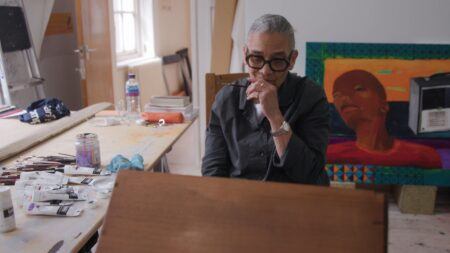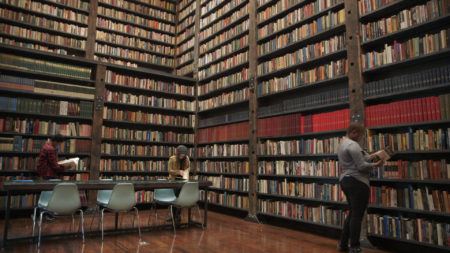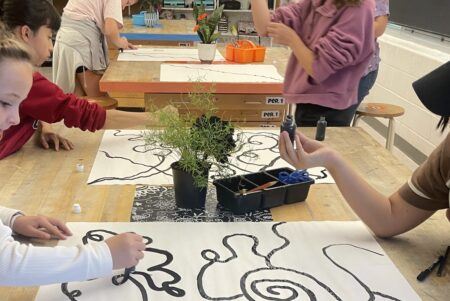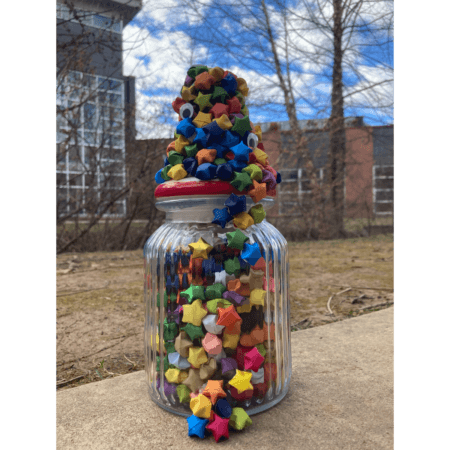Teaching with Contemporary Art
Reflect and Refresh

Photo by Julia Munar.
This past school year was like no other; the pandemic posed unique teaching challenges for everyone. As I reflect on what I have learned from my experiences of teaching young artists remotely, I wonder: How can we use our experiences from this past year to inform our future teaching? In an Art21 article from December 2020, Joe Fusaro said, “This school year is one of reinvention, reimagining, revising, and relearning. We’re all new teachers again.” This statement really resonated with me when I read it for the second time, at the close of the school year. Although I had completed my thirteenth year of teaching art at the elementary level, the novelty of remote teaching gave me the energy of a new teacher. Finding myself in an unexpected situation meant I had to rethink many aspects of my teaching practice in a way that felt fresh and unfamiliar.
Planning a year of teaching without the things I normally rely on for my art classes—such as having an art studio, having supplies ready for students when class begins, or being together in one physical space—posed a great creative challenge: I thought to myself, without access to these things that I feel are vital, how can I work within these restrictions to create learning experiences for my students that everyone can be excited about?
This line of thinking reminded me of a unit that I taught during my time in the Art21 Educators program. My art-teaching partner in the program, Maureen Hergott, and I were interested in Matthew Barney’s series, Drawing Restraints 1–6 (1987–89). In these works, Barney would create physical and spatial obstacles to make drawing more difficult for himself. For example, he would try to make marks while jumping on a trampoline, being tethered to an object, using a long drawing tool, and climbing. Maureen and I asked our students, “Why would an artist create drawing challenges for themselves?” This led to an exploration on how giving oneself limitations can push an individual to become more creative. In the unit, students created their own restraints for painting: they made painting tools using very long dowels, dangled paint brushes from long strings, used found objects to make unique paint brushes, and created other ingenious methods of applying paint. We talked about how creating these restraints changed the experience of painting: we had new goals and expectations, and we had to invent new ways of working.
With remote teaching, I also needed to set different goals and expectations and invent new ways of conveying information to my students, and I wanted to harness the energy of that earlier painting-restraints unit. I began by considering what I had access to, in this new format that is normally not so easy to access. Once I started thinking about this, I grew excited about the possibilities: virtual field trips from local art museums, taking time to slow down and look more closely at works of art, weaving short video clips of artists into presentations. I kept looking for and finding inspiration and figuring out ways to incorporate it into my teaching. I met more often with fellow art teachers, such as the Art21 Educators Elementary group; we supported each other and shared resources, ideas, and presentations. Sharing resources and discussing ideas with other teachers further helped me to rethink and flip familiar topics and lessons. As I continued to develop new teaching tools for myself, I became more savvy with the presentations I created for my students, and I discovered more interactive ways of sharing art based on the various topics we would explore together.
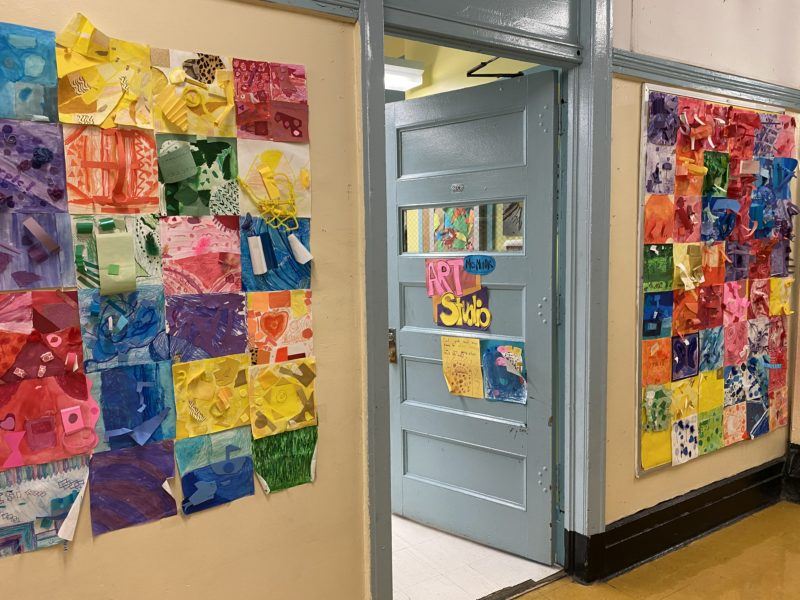
Photo by Julia Munar.
Because we didn’t have a physical classroom studio as a home base for art supplies, I took a survey of my students about what materials they had at their homes, what materials they wanted to use, and what types of ideas, concepts, and processes they wanted to explore. This information from my students helped to drive the curriculum for the year. This information led to explorations of mediums that were accessible at home and normally not utilized in the classroom art studio, such as using photography and digitally drawing on tablets. It also led to class conversations about how everyone approaches art differently. Since each student had different materials at home, everyone’s art would look very different.
Looking back, I enjoyed the challenge of working within restrictions: it made the past school year feel new and challenging. When one has been teaching for a while, it is easy to fall back on familiar lessons, topics, and ideas. This past year of remote teaching wound up being a positive experience because it forced me to re-examine my teaching practice in a new and unexpected way. During the summer, I have been wondering how I can generate that new-teacher feeling again for myself. Throughout the school year, I gave my students many creative challenges that spurred creativity and pushed them to grow as young artists. What creative challenges can I, as an educator and artist, set for myself? How can self-imposed creative challenges help us all to continue to evolve as educators and artists?
Here are a few challenges for elementary-school art teachers to try:
- Take a familiar unit and make it fresh by adding a restriction: for example, exploring the application of paint without using paint brushes, or making a sculpture using only plain white paper.
- Connect with a fellow art teacher, try your own take on a colleague’s favorite unit, and share it back with them.
- Learn about five artists who are unfamiliar to you, and think of ways to incorporate these artists and their work into your teaching.
In the fall, there will continue to be new teaching challenges related to the pandemic. I invite you to think of these obstacles as opportunities to grow as an art teacher and to welcome newness into your teaching practice.
